Exoskeleton do it yourself
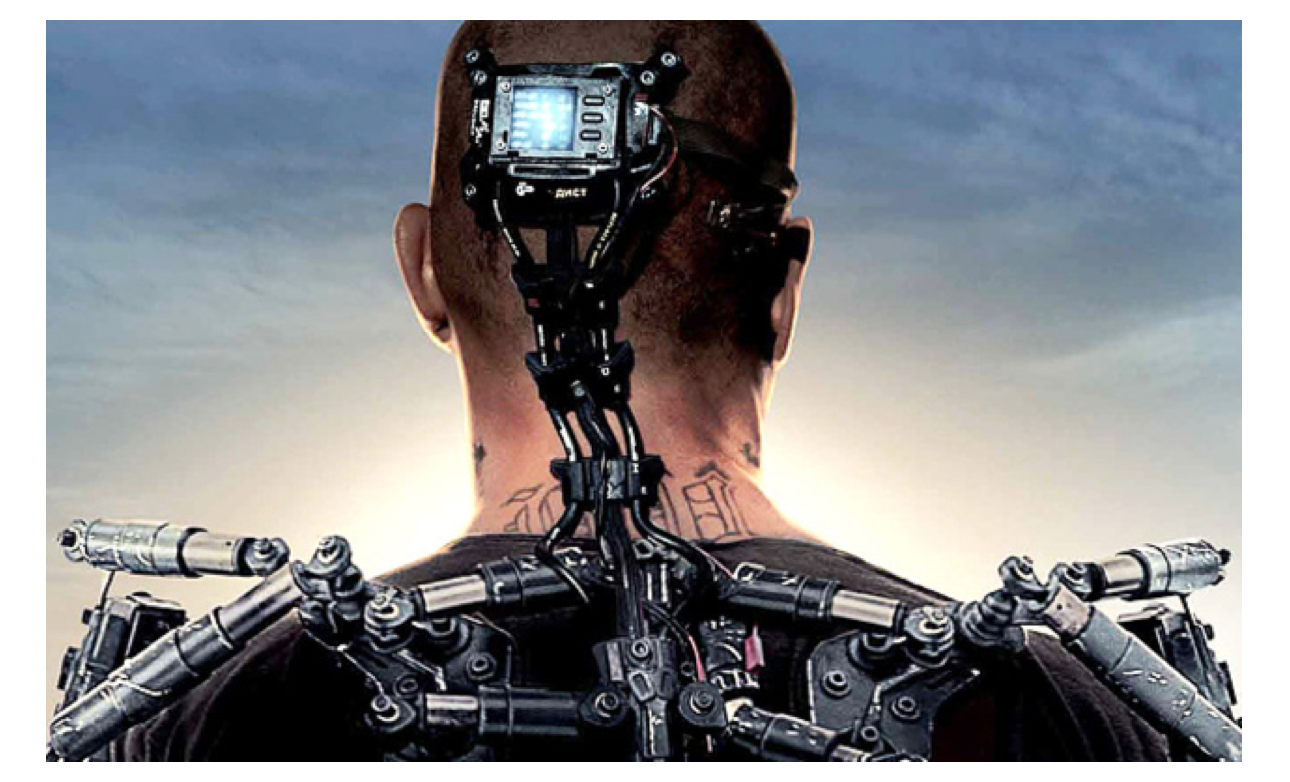
I remember seeing Avatar completely stunned by the exoskeleton shown there. Since then, I think that there is a future for these smart pieces of hardware. I also really want to attach the sharpened little hands to this topic with the wrong side. Moreover, if you believe the analytical agency ABI Research, the world market for exoskeletons will amount to $ 1.8 billion by 2025. At this stage, not being a technical engineer, engineer, architect or programmer, I am in some confusion. I think how to approach this topic. I would be glad if there are people in the comments to the article who would potentially be interested in participating in such projects.
Now four key companies are working on the exoskeleton market: American Indego, Israeli ReWalk, Japanese Hybrid Assistive Limb and Ekso Bionics. The average cost of their products from 75 to 120 thousand euros. In Russia, people also do not sit without doing. For example, the company " Exoatlet " is actively working on medical exoskeletons.

The first exoskeleton was jointly developed by General Electric and the United States military in the 60s, and was called Hardiman. He could lift 110 kg with the force applied when lifting 4.5 kg. However, it was impractical because of its considerable mass of 680 kg. The project was not successful. Any attempt to use the complete exoskeleton ended in an intense uncontrolled movement, as a result of which he was never fully tested with the person inside. Further research was focused on one hand. Although she had to lift 340 kg, her weight was 750 kg, which is two times the lifting force. Without all the components to work together, the practical application of the Hardiman project was limited.
')
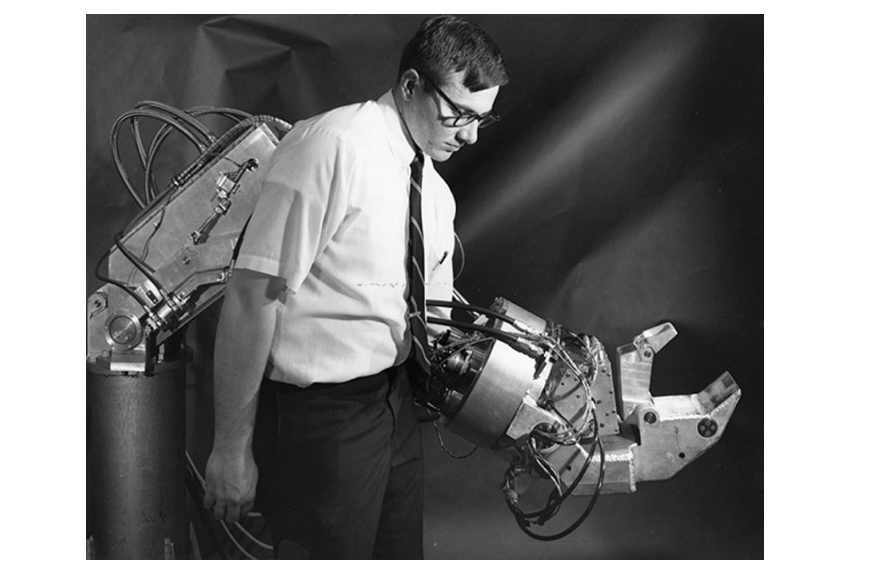
Next will be a short story about modern exoskeletons, which somehow reached the level of commercial implementation.
Rex
REX - motorized exoskeleton costume (exoskeleton costume), providing upright walking for people suffering from lower limb paralysis. Created by REX Bionics, it is available for purchase in Russia.
Price in Russia: about 9 million rubles .
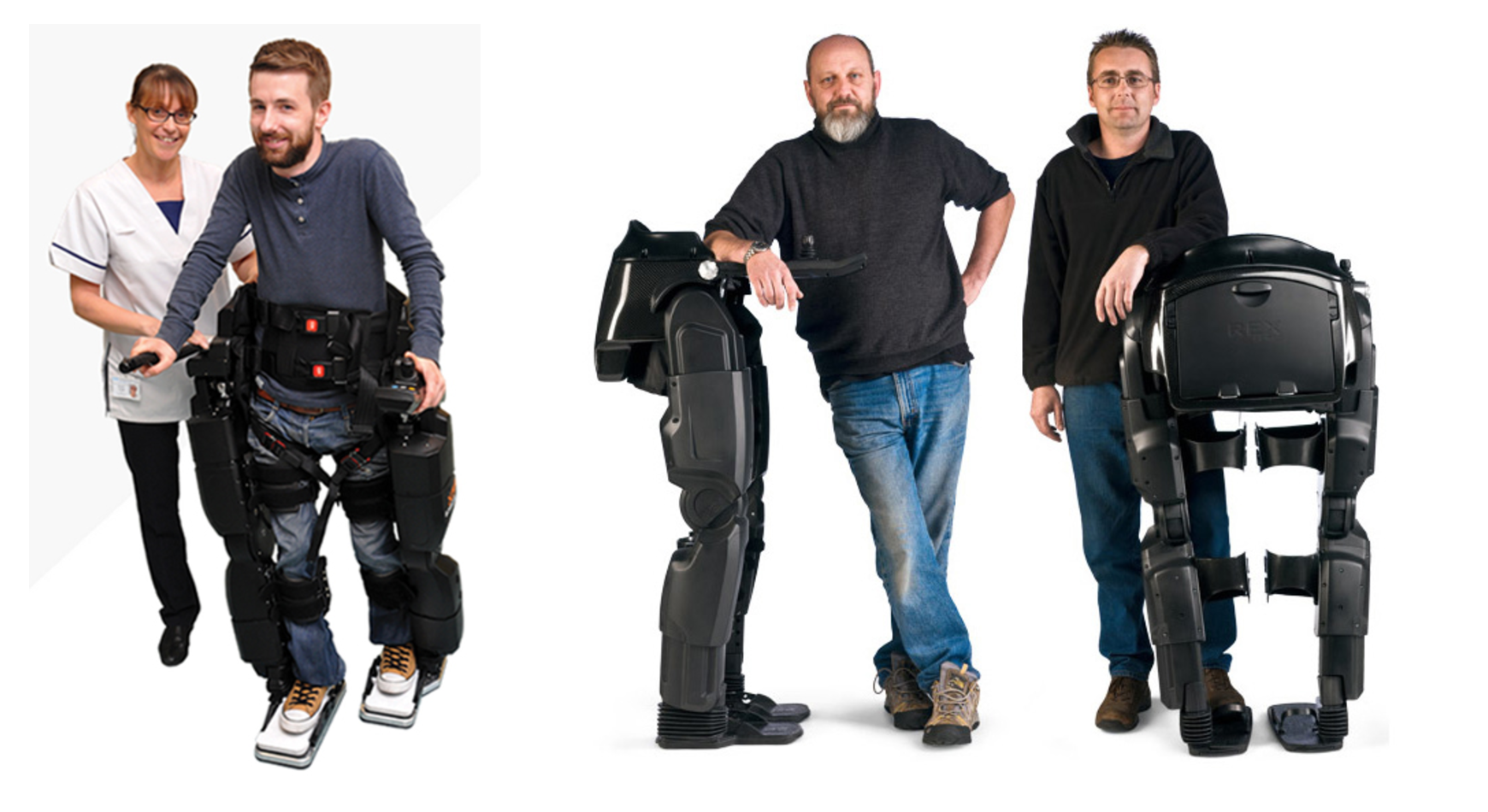
Features and specifications:
1. Independent walking. Does not require crutches or other means to stabilize, while leaving your hands free.
4. The exoskeleton for the legs allows you to: stand up / sit down, turn around, walk back, stand on one leg, walk up the stairs, walk on different, even inclined surfaces.
5. The device is very easy to control - all functions are activated using the joystick.
6. The device can be used all day, thanks to the high-capacity removable battery.
7. With a small weight of REX of only 38 kilograms, it sustains a user weighing up to 100 kilograms and with an increase from 1.42 to 1.93 meters.
8. A convenient locking system does not cause any discomfort even if you wear it all day.
9. Also when the user does not move, but simply costs REX does not waste battery power.
10. Access to buildings without ramps, thanks to the ability to walk the stairs without help.
HAL
HAL ( Hybrid Assistive Limb ) - is a robotic exoskeleton with upper limbs. At the moment, two prototypes have been developed - HAL 3 (restoration of the motor function of the legs) and HAL 5 (restoration of the work of the arms, legs and torso). With the help of HAL 5, the operator is able to lift and carry objects that are five times as large as the maximum load under normal conditions.
Price in Russia : promised for 243,600 rubles . In open sources information could not be confirmed.
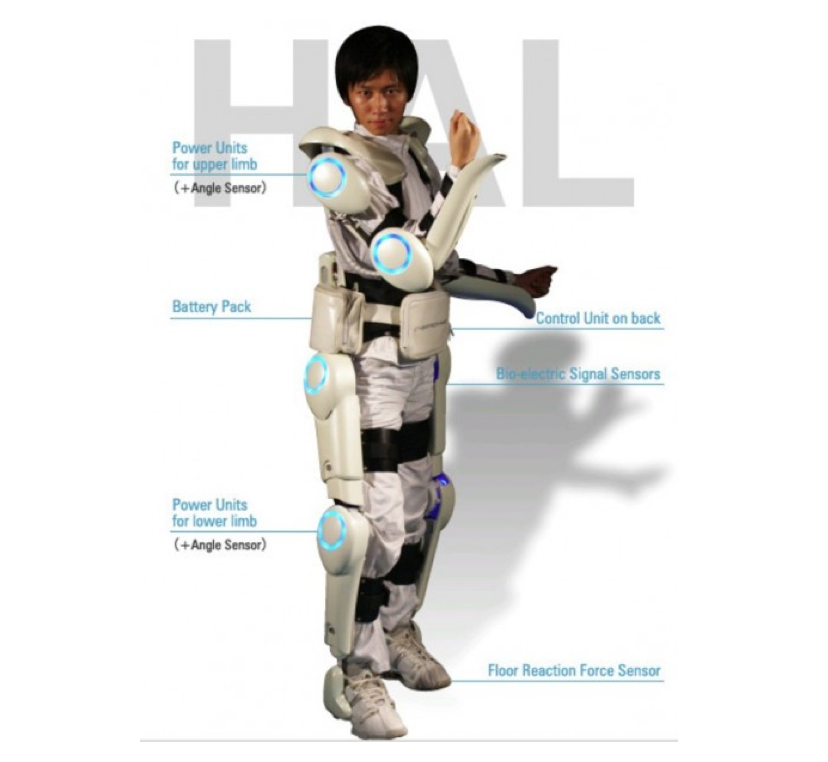
Features and specifications:
1. The weight of the device is 12 kg.
2. The exoskeleton can withstand up to 80 kg.
3. The device can operate from 60 to 90 minutes without recharging.
4. The exoskeleton is actively used for the rehabilitation of patients with pathology of the motor functions of the lower limbs due to disorders of the central nervous system or as a result of neuromuscular diseases.
Rewalk
Rewalk is an exoskeleton that allows people with paralysis of the lower limbs to walk. Like an external skeleton or bioelectronic suit, the ReWalk device, using special sensors, detects deviations in a person’s equilibrium and then transforms them into impulses that normalize his movements, which allows a person to walk or stand. ReWalk is already available in Europe, and today is approved by the FDA in the United States.
Price in Russia: from 3.4 million rubles (on request).
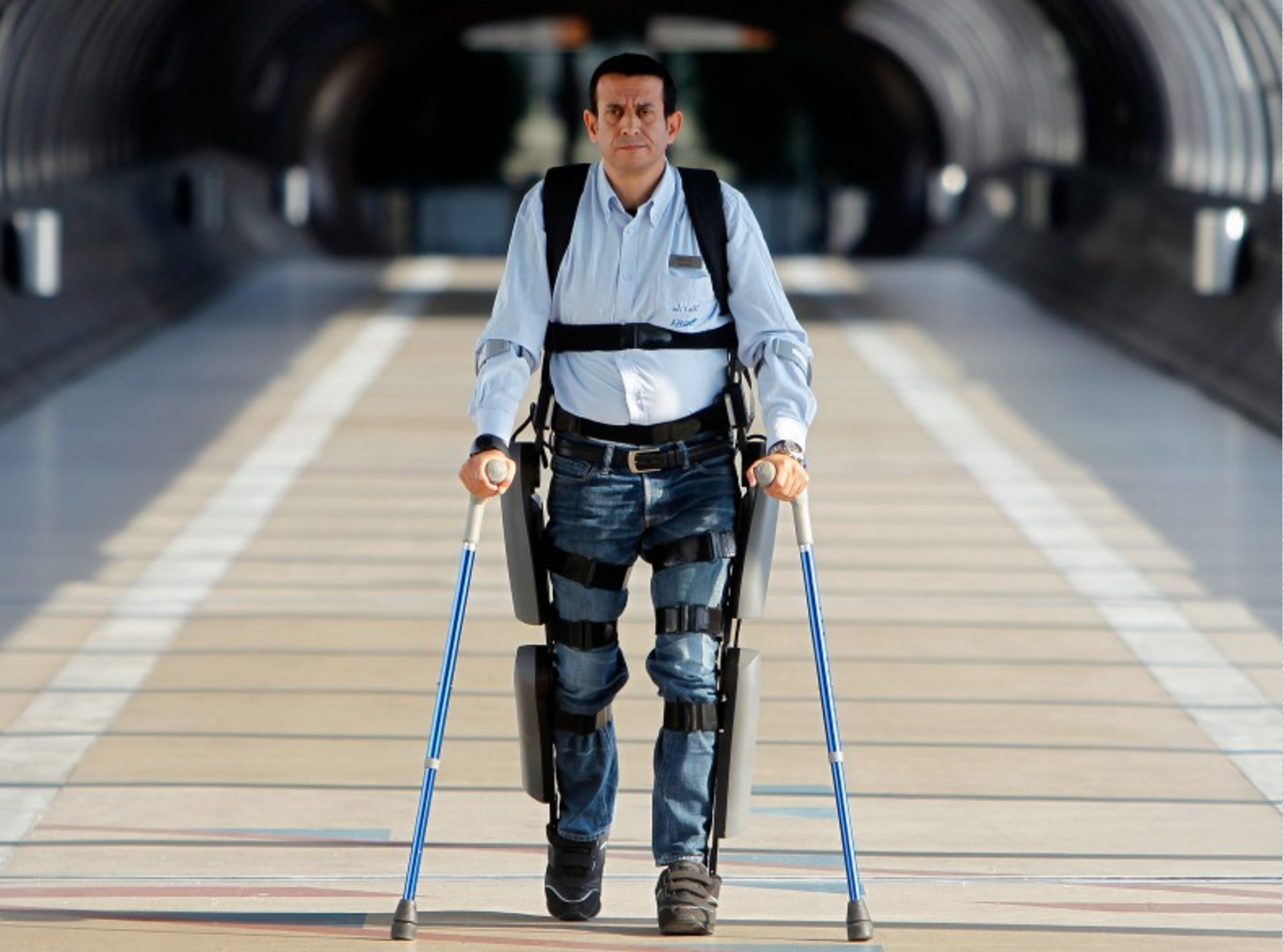
Features and specifications:
1. The weight of the device is 25 kg.
2. The exoskeleton can withstand up to 80 kg.
3. The device can work up to 180 minutes without recharging.
4. Battery charging time 5-8 hours
5. The exoskeleton is actively used for the rehabilitation of patients with pathology of the motor functions of the lower limbs due to disorders of the central nervous system or as a result of neuromuscular diseases.
Ekso bionic
Ekso GT is another exoskeleton project that helps people with serious motor system illnesses regain their ability to move.
Price in Russia: from 7.5 million rubles (on request).

Features and specifications:
1. The weight of the device is 21.4 kg.
2. The exoskeleton can withstand up to 100 kg.
3. Maximum width of the hips: 42 cm;
4. Battery weight: 1.4 kg;
5. Dimensions (HxWxD): 0.5 x 1.6 x 0.4 m.
6. The exoskeleton is actively used for the rehabilitation of patients with pathology of the motor functions of the lower limbs due to disorders of the central nervous system or as a result of neuromuscular diseases.
Next, I propose a field for fantasy. Let's think together, what could a real “people's exoskeleton” be?
DM
DM ( Dream machine ) - hydraulic automated exoskeleton with voice control system.
Price in Russia: 700,000 rubles.
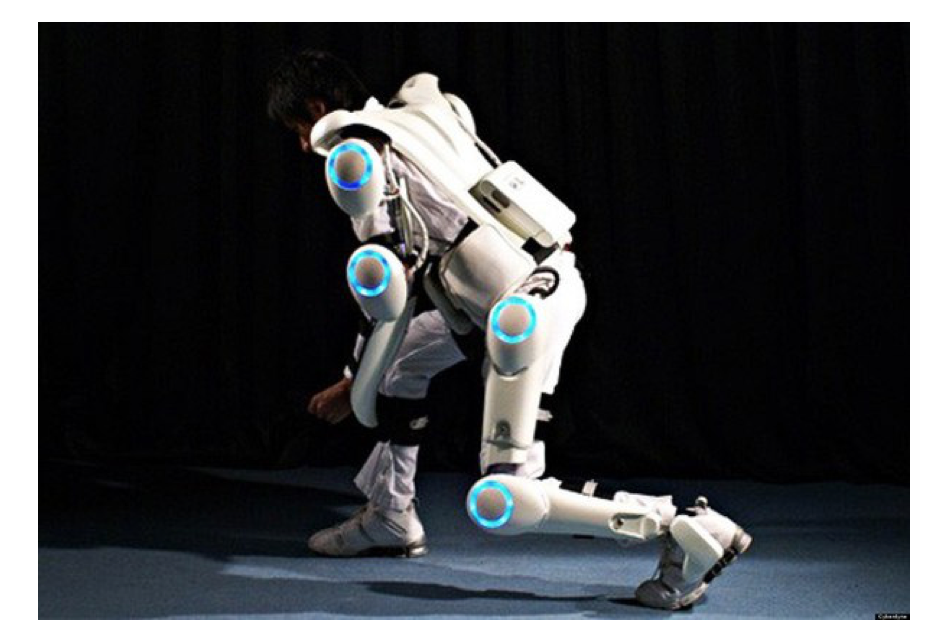
Features and specifications:
1. The weight of the device is 21 kg.
2. The exoskeleton must withstand the user's weight up to 100 kg.
3. The scope of application may be much wider than the rehabilitation of patients with pathology of the motor functions of the lower extremities due to disorders of the central nervous system or as a result of neuromuscular diseases. This may be industry, construction, show business and the fashion industry.
Issues for discussion:
1. What is the optimal composition of the project team?
2. What is the cost of the project at the initial stage?
3. What are the pitfalls?
4. How do you see the optimal duration of the project from the idea to a commercial start?
5. Is it worth starting a similar project now and why?
6. What should be the geography and expansion into the market?
7. Personally, are you ready to take part in such a project, and if so, in what capacity?
ZY I would appreciate a constructive discussion, opinions, arguments and arguments for and against in the comments. I am sure that I am not the only one in thought. Meanwhile, I am sure that the exoskeleton is a new iPhone in the world mass culture on the horizon of the next ten years.

Source: https://habr.com/ru/post/326596/
All Articles